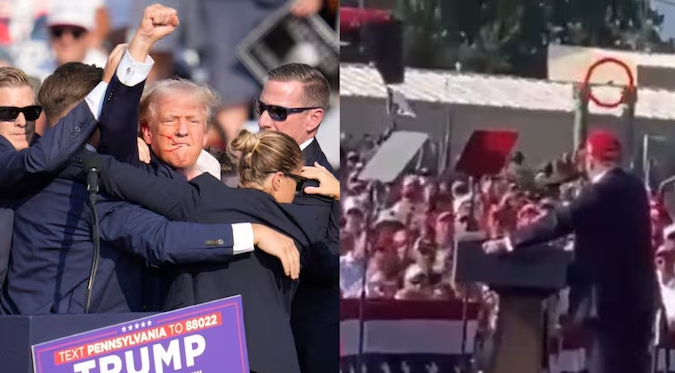The US Secret Service plans to ramp up its use of surveillance drones following the attempted assassination of former President Donald Trump, the agency’s acting director announced on Friday. “We did not have a drone on site” at the July 13 campaign rally in Butler, Pennsylvania, where a gunman opened fire on the Republican White House candidate, said Ronald Rowe, who recently assumed the role of acting director.
During the attack, Trump sustained a minor wound to his right ear. Tragically, two rally attendees were seriously injured, and a 50-year-old Pennsylvania firefighter lost his life. The gunman, Thomas Matthew Crooks, fired eight shots from a nearby rooftop before being fatally shot by a Secret Service counter-sniper positioned on a building behind the stage.
Also Read: Explosions Rock Key Russian Airbase as Eastern Front Sees Intense Fighting
“We should have had better coverage on that roofline,” Rowe remarked at a press conference, acknowledging the gaps in their surveillance. “We thought we might have had it covered with the human eye, but clearly we are going to change our approach now and we are going to leverage technology and put those unmanned aerial systems up.”
The FBI reported that Crooks flew a drone near the rally site for 11 minutes approximately two hours before the attack.
Rowe, who took over as acting director on July 23, described the assassination attempt as a “dark day” for the nation and affirmed the Secret Service’s commitment to taking “full responsibility” for the “mission failure.”
He revealed that multiple investigations are underway into the incident and assured that Secret Service employees will be held accountable if any policy violations are discovered.
The Butler event marked the first time Secret Service counter-snipers were deployed to support the former president’s security detail. “Looking back, it was very fortunate that we did,” Rowe noted, mentioning that state and local counter-snipers had previously supported Trump’s events.
In testimony before a Senate committee earlier this week, Rowe stated that Trump’s security detail and sniper teams were unaware of the gunman on the roof until he opened fire. Local law enforcement had informed the Secret Service about a “suspicious individual,” but the suspicion had not escalated to the level of a direct threat.
Key Points:
- Increased Drone Surveillance:
- The US Secret Service plans to enhance its use of surveillance drones following the attempted assassination of former President Donald Trump.
- Details of the Incident:
- The assassination attempt occurred on July 13 at a campaign rally in Butler, Pennsylvania.
- A gunman, Thomas Matthew Crooks, opened fire from a nearby rooftop, injuring Trump and two attendees, and killing a 50-year-old firefighter.
- Response and Security Measures:
- Crooks was shot dead by a Secret Service counter-sniper.
- Acting Director Ronald Rowe acknowledged the lack of drone surveillance at the event and emphasized the need for better technological coverage.
- Surveillance Gaps:
- The FBI reported that Crooks had flown a drone near the rally site for 11 minutes before the attack.
- The Secret Service admitted to relying too heavily on human observation for roofline coverage.
- Accountability and Investigations:
- Rowe described the incident as a “dark day” and affirmed that the Secret Service takes “full responsibility” for the “mission failure.”
- Multiple investigations are ongoing, and Secret Service employees will be held accountable for any policy violations.
- Historical Context:
- This was the first time Secret Service counter-snipers supported Trump’s security detail, a role previously filled by state and local snipers.
- Senate Committee Testimony:
- Rowe testified that Trump’s security detail and sniper teams were unaware of the gunman until the shooting began.
- Local law enforcement had identified a “suspicious individual,” but it had not escalated to a perceived imminent threat.



